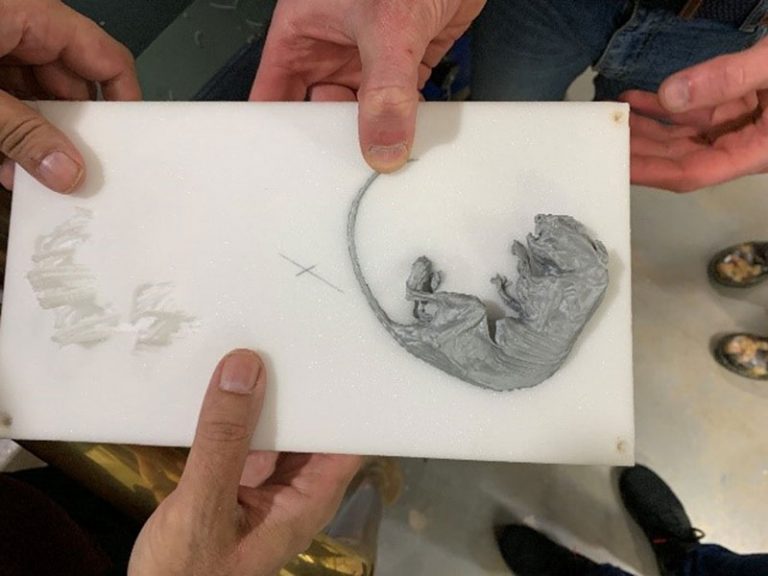This spring, several new research staff have joined our Collection Care Department. Our Collection Care research programme is designed to enable staff to predict the long-term stability of our holdings. They do this by increasing understanding of
- the materials used to create records
- degradation processes
- mitigation of deterioration
- the relationship of materials to the environment in which they are stored
Joining the department are four early-career researchers who are working to adapt new technologies. A new senior conservation scientist, Lucia, has also joined us: she will undertake dynamic long-term projects including research into wax seals and consolidants for paints. The researchers are also contributing to the wider field of heritage science through dissemination activities and collaborations.
In the first of this two-part blog series, our new staff have outlined their research interests and activities; find out more about our two 3D printing fellows and conservation intern.
Ellen Valter, 3D Printing Fellow
What did you do before you joined The National Archives?
I very recently completed Cultural Heritage Conservation post-graduate studies at Fleming College in Ontario, Canada, after a career in another field. I am thrilled to be at The National Archives to help the Collection Care department further the initiatives it has on the go.
What are you researching?
I have determined that the chemical stability of 3D printing filaments continues to be problematic for conservation applications. I am exploring other 3D imaging and printing applications for outreach in an archives context.
How will the research you’re conducting help you in the future?
Traditional and non-traditional audience engagement is a rapidly developing area with technological developments available for adaptation and deployment. It’s something that other institutions are exploring as well.
Bogdan Luca, 3D Printing Fellow
What did you do before you joined The National Archives?
I am currently studying at UCL towards an MSci Chemistry degree. I have also been 3D printing for the past two and a half years: I first started using the technique while I was in high school in Romania.
What are you researching?
The initial aim of our research project at The National Archives was to create custom housing for fragile collection items. However, after discovering that there are no suitable materials to 3D print with, I steered my focus towards developing a suitable, easy-to-follow photogrammetry procedure that the staff at The National Archives can use. I have also focused on creating sets of instructions for post-processing the photogrammetry results and creating textured virtual copies of the scanned objects.
How will the research you’re conducting help you in the future?
The research at The National Archives definitely got me interested in 3D imaging methods. I would say that this six-week fellowship may help me towards a career in this area. However, at the moment I’m still a student and I’m trying to balance my studies with my career and my interests – so it’s definitely hard to say what the future holds for me.

Experimental housing for a 3D printed surrogate of Sir Henry Cole’s rat, constructed through inter-institutional collaboration
Rebecca Sawyer, Preventative Conservation Intern
What did you do before you joined The National Archives?
I am a part-time student at Northumbria University studying Preventive Conservation. I am here on a six-week placement, from mid-February until the end of March.
What are you researching?
My Work Placed Learning Project is investigating how an ATP testing kit – which measures Adenosine Triphosphate (ATP), which is present in all living or once-living cells – can be used at The National Archives. I am testing shelves and boxes in the repositories to see if the ATP kit can be used to check when cleaning needs to be done in different areas of the repositories to support a change in the cleaning regime.
I am shadowing Amy Sampson in the Preventive Conservation department in the annual recalibration of the Hanwell Environmental devices. I am inspecting materials which have been brought on site for exhibition and display, assisting generally where possible, and doing as much training and research as can fit in a six-week placement!
How will the research you’re conducting help you in the future?
The practical part of my research project is informing my research for dissertation, which will discuss air-borne particulates in a heritage environment.
During my time here, I have received a lot support in accessing articles and research journals as well as training sessions: the conservation team in Collection Care have been really generous in sharing their time and expertise. One of the most striking and remarkable aspects of the department is the culture of skills-sharing and professional development.